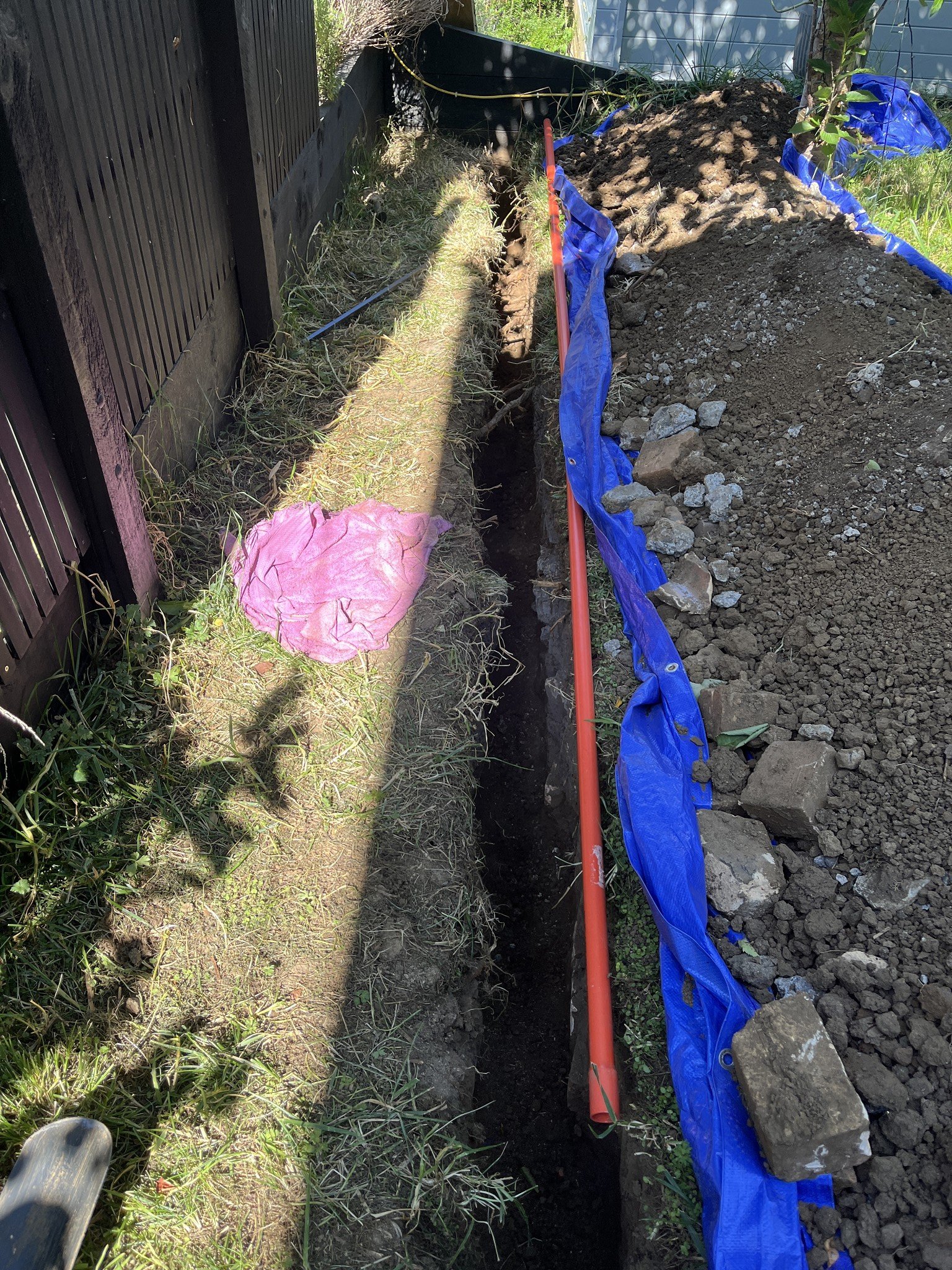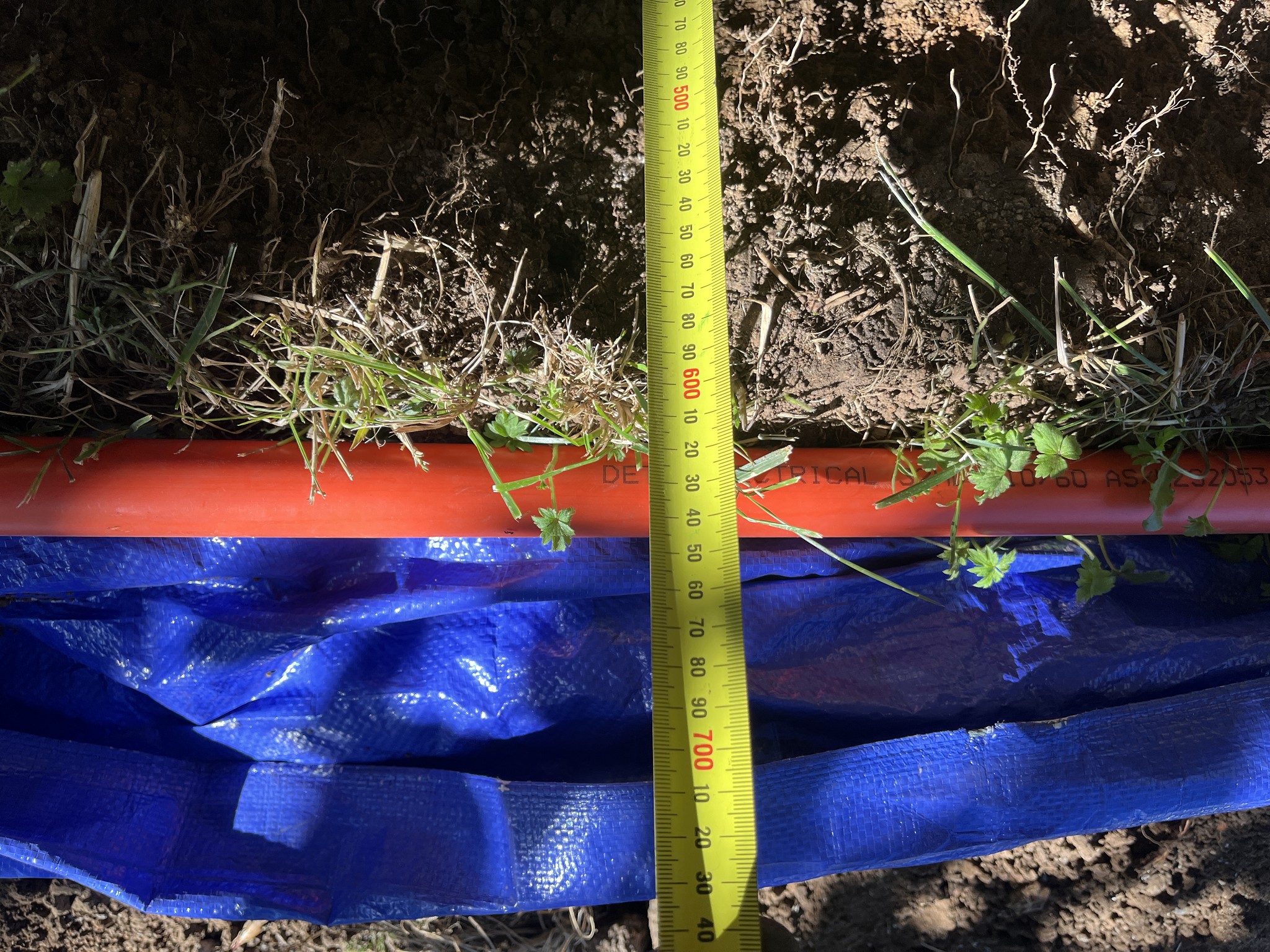Hi all, this is somewhat of a followup to another thread (I am not the OP) https://www.geekzone.co.nz/forums.asp?topicid=280420
I have dug a trench, 600mm deep, between the house and retaining wall, and will do the same on the other side of the wall and come up just outside a cabin I built. I have 2 runs of 32mm orange conduit, one for power (will be 6mm TPS) and the other for data (I already have an outdoor rated Cat6 cable that is strung to the cabin, this will go into the second conduit).
I also have the electrical warning tape, but I cannot find a copy of AS/NZ 3000:2018 without having to pay a large sum of money, so checking on Geekzone if I have done everything correct :-)
Trench is 600mm from ground level
2 separate conduits for power and data
Backfill to 300mm then lay warning tape
Add in warning signs at both end of the trench
Conduits will exit inside a wall (I am lucky enough that the exit point is an area I am rebuilding, including a nib wall and new framing, due to recent repealing work)
Anything I have missed? Some photos for reference:



